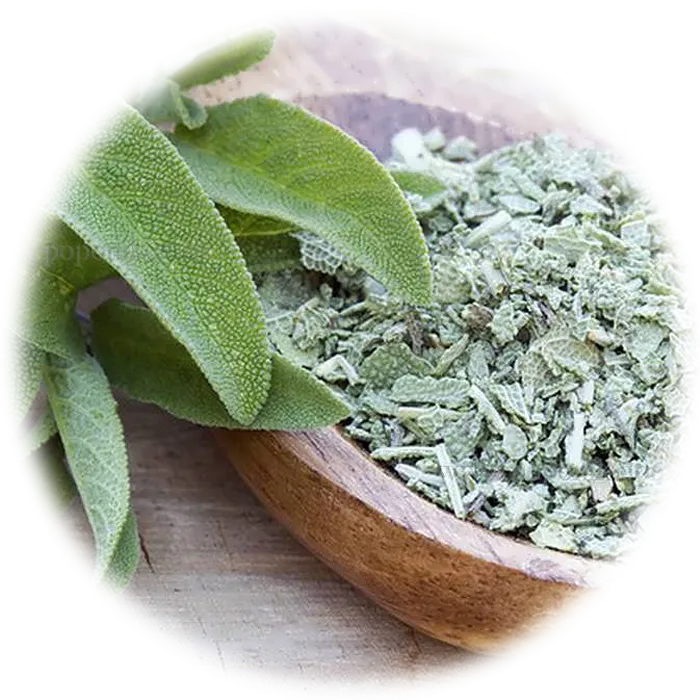Nutritional properties of Sage
Energy :
315.00 Kcal / 100g
Category : Spices & Sauces
Group : Basic Spices & Condiments
Composition And Nutritional Value :Sage is an aromatic herb rich in vitamins and minerals, including vitamin K, vitamin A, and several B-vitamins, as well as iron, calcium, and magnesium. It is also a good source of antioxidants, such as rosmarinic acid and flavonoids, which contribute to its health-promoting properties. Sage contains essential oils like thujone, camphor, and cineole, which give it its distinctive aroma and flavor. While low in calories, sage provides significant nutritional value through its rich antioxidant content.
Health Benefits : Sage has a wide range of health benefits, particularly due to its anti-inflammatory, antimicrobial, and antioxidant properties. It may improve cognitive function and memory, making it beneficial for brain health. Sage has also been used traditionally to support digestive health, relieve sore throats, and reduce hot flashes in menopausal women. Its antimicrobial properties make it effective for fighting infections, and its antioxidants help protect the body from oxidative stress, potentially lowering the risk of chronic diseases.
Culinary Uses : Sage is widely used in Mediterranean, European, and American cuisines. Its strong, earthy flavor pairs well with poultry, especially turkey and chicken, as well as pork, lamb, and sausage. Sage is often used to flavor stuffing, soups, stews, and sauces, and it works well with roasted vegetables, particularly squash and potatoes. Fresh sage leaves can be sautéed in butter for a savory side dish, or added to pasta, risottos, and salads. Dried sage is also commonly used in spice blends, such as poultry seasoning.

